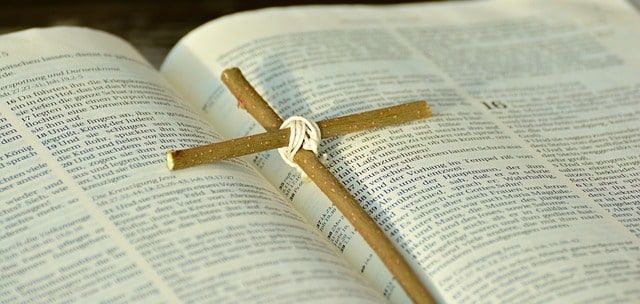
In the canon of Christian scripture, the Gospel of John holds a distinctive place for its profound and deeply spiritual insights into the life and mission of Jesus Christ. The Book of John takes readers on a journey beyond the physical realm of Christ’s miracles, delving into the theological implications of His works and teachings. This is particularly apparent in the fifth chapter of John, which serves as a pivotal point in the narrative, presenting a complex interplay of healing, conflict, and testimony. This commentary on John 5 offers a detailed exploration of the chapter’s contents, elucidating its significance in the broader context of the Gospel and its application to contemporary Christian life.
The fifth chapter of John recounts a significant event and its ensuing consequences: Jesus healing a man on the Sabbath, a deed that ignites controversy with the Jewish leaders, and sets the stage for a series of profound revelations about His identity and divine mission. This incident serves not only as a testament to Jesus’ miraculous powers but also as a stepping stone for Him to declare His unique relationship with God the Father, and His role in the ultimate judgment and resurrection.
In this commentary on John 5, we will examine each of these themes in detail, drawing from historical, theological, and literary perspectives to gain a comprehensive understanding of the chapter. We will delve into the implications of Jesus’ actions, the reactions they provoked, and the pivotal teachings that Jesus put forth in response to the controversy stirred by His healing on the Sabbath. Additionally, we will examine the testimonies given about Jesus and their importance in affirming His divine identity.
Background Information
Brief Explanation of the Book of John
The Gospel of John, the last of the four Gospels in the New Testament, presents a unique and deeply spiritual portrayal of the life, ministry, death, and resurrection of Jesus Christ. Diverging from the synoptic Gospels of Matthew, Mark, and Luke, John’s account gives prominence to the divine nature of Jesus. Written approximately between 90 and 110 AD, this Gospel is often attributed to John the Apostle, though the exact authorship remains a matter of scholarly debate.
The Book of John is structured around a series of seven miracles and discourses that progressively unveil Jesus’ divine identity as the Son of God. With a strong emphasis on theology, it delves into philosophical and metaphysical themes more than the synoptic accounts. The central theme of the book is to prove that Jesus is the promised Messiah and the incarnate Word of God, as introduced in the memorable opening verses, “In the beginning was the Word, and the Word was with God, and the Word was God” (John 1:1).
The Context for Chapter 5
In the context of the Gospel, Chapter 5 is a significant turning point. It marks the escalation of conflict between Jesus and the Jewish religious leaders due to His actions on the Sabbath and His subsequent claims of divinity. It begins with the narrative of Jesus healing a man at the Bethesda pool on the Sabbath, an act that provokes controversy and opposition from the Jewish authorities due to the prohibition of work on the Sabbath.
This conflict serves as a catalyst for Jesus to make profound declarations about His relationship with God the Father. In this chapter, Jesus does not back down from the escalating conflict but instead, speaks even more openly and directly about His unique divine authority and mission.
Additionally, John 5 introduces the theme of testimonies to Jesus’ divine identity and mission, bringing in the testimonies of John the Baptist, Jesus’ works, God the Father, and the Scriptures themselves. This array of witnesses serves to support and affirm the profound truth of Jesus’ identity and mission as the Son of God and the Savior of the world.
As we progress with this commentary on John 5, we will delve deeper into each of these narratives and discourses, exploring their meanings, implications, and their profound spiritual lessons.
Commentary On John 5
The Healing at the Pool on the Sabbath (John 5:1-9)
A. Setting and Description of the Scene (5:1-5)
The fifth chapter of John begins by setting the scene in Jerusalem during a Jewish festival. Though the specific festival isn’t named, its inclusion adds significance to the upcoming events. Here, we find a multitude of invalids—blind, lame, and paralyzed—lying by the pool of Bethesda, a place believed to have healing properties. The focus narrows to a single individual who has been infirm for thirty-eight years, a man seemingly forgotten by time and people, yet noticed by Jesus.
The description of the setting is critical to understanding the story. The pool of Bethesda, with its five porticoes, was a place of hope for many seeking physical healing. The belief in the angelic stirring of waters adding curative properties reflects the desperate attempts of the sick for restoration. The man’s lengthy period of affliction emphasizes his helplessness and perhaps skepticism, having been stuck in his condition for such a significant part of his life.
B. Jesus’ Encounter with the Man (5:6-9)
When Jesus learns of the length of the man’s suffering, His response seems almost startling in its simplicity. He doesn’t ask about the man’s faith or his morality. Instead, His question goes straight to the heart of the matter: “Do you want to get well?” This is an invitation for the man to express his desire for change, to affirm his hope in the face of many years of disappointment.
The man’s response illustrates a pitiable condition; instead of a direct ‘yes’, he gives an explanation for his inability to reach the pool in time, underlining his helplessness and despair. In a situation where he feels trapped by his circumstances, he seems to have given up on the hope of healing.
However, Jesus’ command, “Get up! Pick up your mat and walk,” breaks through these barriers. The power of Jesus’ words is immediately evident. The man is healed instantly, picks up his mat, and begins to walk. This miracle, performed on the Sabbath, serves as a powerful sign of Jesus’ divine authority and his lordship over the Sabbath, a key theme in the conflict that ensues with the Jewish authorities.
In this narrative, Jesus’ miracle goes beyond physical healing. It addresses the psychological barrier of despair, breathing new hope into a seemingly hopeless situation. The man, who was first defined by his infirmity and isolation, is now a testament to Jesus’ transformative power, a theme we will explore further in this commentary on John 5. His healing also serves as a physical representation of the spiritual regeneration offered by Jesus, a truth central to the Gospel of John.
The Jewish Leaders’ Reaction (John 5:10-18)
A. The Reaction to the Healing (5:10-15)
Upon witnessing the healed man carrying his mat, the Jewish leaders respond not with wonder at the miraculous healing, but with indignation because the healing took place on the Sabbath, which they considered a violation of the law. The focus of their concern provides insight into their legalistic view of the Sabbath, which overshadows the compassionate spirit of the law itself.
Their question, “Who is this man who said to you, ‘Pick up your mat and walk’?” reflects their main interest: identifying the one who, in their view, had encouraged the breaking of the Sabbath. When the healed man cannot provide an answer, it’s clear that he did not yet fully comprehend who Jesus was or the significance of what had just occurred.
Later, when Jesus finds the man in the temple and reveals Himself as the healer, He gives a caution, “See, you are well again. Stop sinning or something worse may happen to you.” The man then goes back to the Jewish leaders to tell them that it was Jesus who had made him well.
B. Jesus’ Response and Its Significance (5:16-18)
The healing miracle on the Sabbath escalates the tension between Jesus and the Jewish leaders, causing them to persecute Jesus. Jesus’ response to them deepens this conflict: “My Father is always at his work to this very day, and I too am working.” This statement stirs up even more controversy as Jesus not only equates His work with that of God but also refers to God as His own Father, making Himself equal with God.
In this statement, Jesus challenges the religious leaders’ understanding of the Sabbath. In their stringent adherence to the law, they had forgotten that even on the Sabbath, God’s work of providing, sustaining, and showing mercy continues. By declaring that He too works on the Sabbath, Jesus claims the same divine prerogative.
The Jewish leaders perceive Jesus’ words as blasphemy. Not only did Jesus break the Sabbath in their eyes, but He also claimed an intimate, unique relationship with God that equated Him with God. This, for them, was a step too far, leading to their plot to kill Him.
The escalating conflict over the healing on the Sabbath and the subsequent discourse reveals a key theme in John’s Gospel – the growing opposition to Jesus from the religious establishment, even in the face of His miraculous signs. As we continue this commentary on John 5, we’ll delve deeper into the theological implications of Jesus’ teachings and the reactions they provoke.
Jesus’ Testimony about Himself (John 5:19-30)
A. Jesus’ Relationship with the Father (5:19-23)
Responding to the Jewish leaders’ growing antagonism, Jesus presents a profound discourse about His relationship with the Father. He begins by saying, “Very truly I tell you, the Son can do nothing by himself; he can do only what he sees his Father doing, because whatever the Father does the Son also does.” This statement reveals an intimate and unique union with God the Father. Jesus claims that His actions are not independent but are a direct reflection of the work of God.
Jesus also asserts His authority to give life, just as the Father gives life. He then goes on to say that the Father has entrusted all judgment to the Son, a claim that would have been staggering to the Jewish leaders who firmly believed that only God had the power to judge. Further, Jesus emphasizes that honor should be given to the Son just as it is given to the Father.
B. The Power to Give Life and to Judge (5:24-30)
Jesus expounds on the themes of life and judgment in these verses. He declares, “Very truly I tell you, whoever hears my word and believes him who sent me has eternal life and will not be judged but has crossed over from death to life.” This statement underscores the Gospel message – faith in Jesus Christ brings eternal life.
He reinforces the reality of resurrection and judgment, asserting that the hour is coming when all in their graves will hear His voice and come out – some will rise to live, and others will rise to be condemned. This resurrection is not merely a future event but has begun with Jesus Himself, the source of life, who brings spiritual life to those who believe in Him.
Jesus clarifies that He does not judge on His own authority, but He seeks the will of the Father who sent Him, reinforcing His unity with the Father.
In this section of John 5, Jesus makes bold claims about His divine authority, His role in giving eternal life, and His part in judgment, deeply interconnecting His mission with that of God the Father. As we delve further into this commentary on John 5, it’s essential to grasp the weight of these declarations and their implications for our understanding of Jesus’ divine identity and mission.
Witnesses to Jesus (John 5:31-47)
A. John the Baptist’s Testimony (5:31-35)
In this section, Jesus presents various witnesses to validate His claims. The first of these is John the Baptist, who Jesus says was “a burning and shining lamp,” providing light for others through his testimony about Jesus. However, Jesus makes it clear that His validation does not rely on human testimony alone. John’s witness serves a purpose – it leads others to salvation, but it’s not the primary basis for Jesus’ claims.
B. The Works of Jesus (5:36)
Jesus then points to His works as another form of testimony. These works, given to Him by the Father, attest to His divine origin and mission. The miracles He performs, such as the healing of the invalid at Bethesda, are not just displays of power but also signs that reveal His identity as God’s Son.
C. The Father Himself (5:37-38)
Furthermore, Jesus indicates that the Father Himself bears witness to Him. He criticizes His listeners, saying that they have never heard God’s voice or seen His form, and they do not have His word abiding in them. The implications are clear: if they truly knew God and His scriptures, they would recognize and accept Jesus.
D. The Scriptures (5:39-47)
Lastly, Jesus points to the Scriptures as a witness. The Jewish leaders diligently studied the Scriptures, thinking that in them they had eternal life. However, Jesus challenges them, saying, “these are the very Scriptures that testify about me, yet you refuse to come to me to have life.” Despite their rigorous study, they missed the central point of the Scriptures: they bear witness to Jesus Himself.
Jesus then makes a final, damning statement. If they believed Moses, they would believe Jesus, for Moses wrote about Him. But if they do not believe Moses’ writings, how will they believe Jesus’ words? This rhetorical question underscores the unbelief of the religious leaders who, despite their religious knowledge, failed to recognize God’s Messiah in their midst.
This section of John 5 underscores the theme of witnessing that is prevalent in the Gospel of John. In this commentary on John 5, understanding the four-fold testimony to Jesus’ identity and mission – John the Baptist, the works of Jesus, the Father Himself, and the Scriptures – is crucial in comprehending the broader narrative of the Gospel.
Conclusion
In conclusion, the fifth chapter of the Gospel of John provides profound insights into Jesus’ divine identity and mission. Through the narrative of the healing at the pool of Bethesda, Jesus’ discourses on His relationship with the Father, and the testimonies about Him, we gain a deeper understanding of His divine authority and His role as the Giver of life.
In the face of escalating conflict with the Jewish religious leaders, Jesus boldly asserts His divine prerogative to work on the Sabbath and His intimate, unique relationship with God the Father. The testimonies brought forth in this chapter, including that of John the Baptist, Jesus’ own works, God the Father, and the Scriptures themselves, underscore Jesus’ claims.
However, this chapter also exposes the tragic reality of unbelief. Despite the powerful testimonies supporting Jesus’ identity and mission, the religious leaders refuse to accept Him, underscoring the tension that will ultimately lead to Jesus’ crucifixion.
As we conclude this commentary on John 5, we are reminded of the essential truth at the heart of the Gospel – Jesus, the Son of God, offers eternal life to those who believe in Him. His healing of the man at Bethesda is more than a physical restoration; it symbolizes the spiritual renewal available to all through faith in Jesus. The invitation extended to the man at the pool extends to us as well: Do we want to get well? Do we want to experience the transformative power of Jesus in our lives?
Thank you for joining me on this exploration of John 5. It is my hope that this commentary on John 5 has helped deepen your understanding and appreciation of this powerful chapter in the Gospel of John. I invite you to continue studying, questioning, and seeking to understand the rich and profound message of the Gospel.


